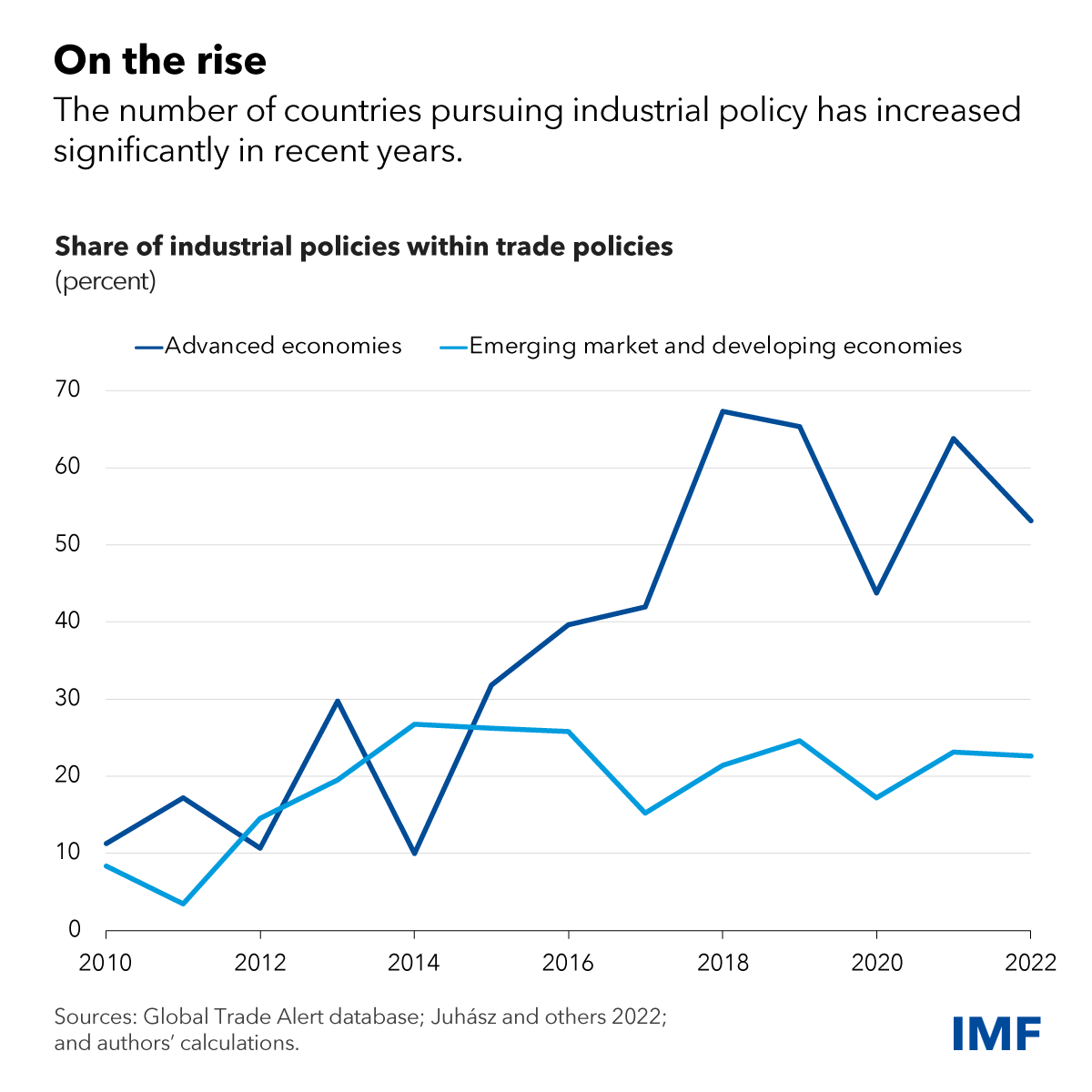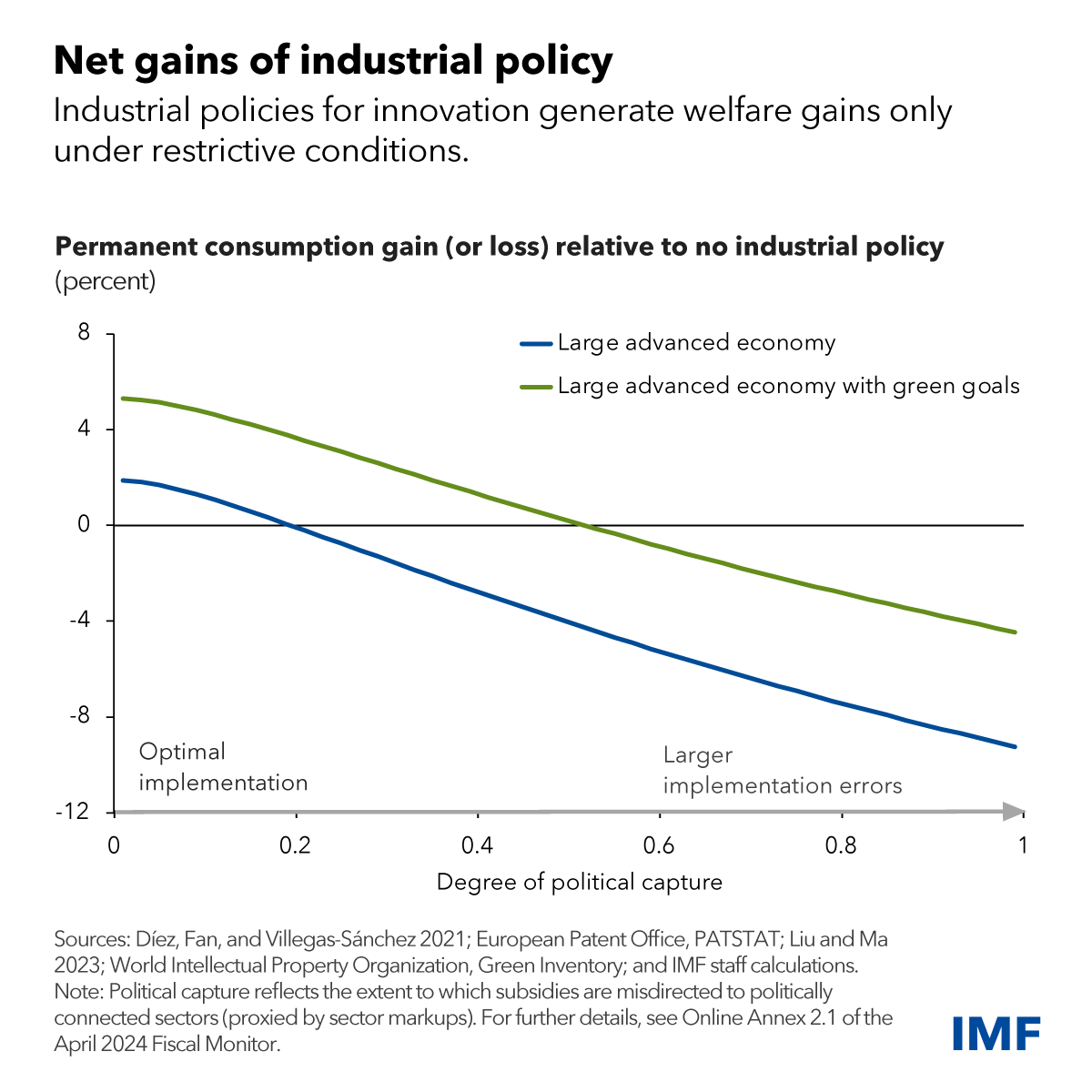Many countries are ramping up industrial policy to boost innovation in specific sectors in the hope of reigniting productivity and long-term growth, amid security concerns. Major initiatives are springing up around the world, such as the United States’ CHIPS and Science Act, which will fund domestic research and semiconductor manufacturing, the European Union’s Green Deal Industrial Plan, which supports the bloc’s transition to climate neutrality, the New Direction on Economy and Industrial Policy in Japan, or the K-Chips Act in Korea, alongside longstanding policies in emerging market economies like China.
Industrial policy, in which governments support individual sectors, can drive innovation if done right. But striking the right balance is a crucial consideration, as history is full of cautionary tales of policy mistakes, high fiscal costs, and negative spillovers in other countries.

This recent turn to industrial policy to support innovation in specific sectors and technologies is not a magic bullet, as we show in a chapter of the April 2024 Fiscal Monitor. Instead, well-designed fiscal policies that support innovation and technology diffusion more broadly, with an emphasis on fundamental research that forms the basis of applied innovation, can lead to higher growth across countries and accelerate the transition to a greener and more digital economy.
Our assessment of how fiscal support for innovation should be targeted to specific sectors shows that pursuing such policies generate productivity and welfare gains only under stringent conditions:
- When targeted sectors generate measurable social benefits, such as lower carbon emissions or higher spillovers of knowledge to other sectors;
- When policies do not discriminate against foreign firms; and
- When the government has strong capacity to administer and implement such a policy.
Most industrial policy relies heavily on costly subsidies or tax breaks, which can be detrimental for productivity and welfare if not effectively targeted. This is frequently the case, as for example when subsidies are misdirected toward politically connected sectors. In addition, discriminating against foreign firms can prove self-defeating, as such policies can trigger costly retaliation and most countries—even major advanced economies—rely on innovation done elsewhere.

In some cases, industrial policy can be justified, such as when it supports sectors that generate strong knowledge spillovers to the domestic economy (for example, in the semiconductor industry). Another important use case is driving green innovation—reaching net zero emissions will require technologies that do not yet exist. But subsidies to green innovation should be transparent, focused on environmental objectives, and complemented by robust carbon pricing to minimize fiscal costs.
More generally, governments deploying industrial policies should invest in technical capacity, recalibrate support as conditions change, and act in line with open and competitive markets. They need to design policy with a view to avoiding wasteful spending and protectionist measures that could further fragment global trade.
Pro-innovation policy mix
Technologically advanced economies would do well to choose a policy mix that supports innovation more broadly, especially because fundamental research with wide applications is usually underfunded.
A cost-effective way to boost innovation and growth is implementing a complementary mix of public funding for fundamental research, research and development grants for innovative start-ups, and tax incentives to encourage applied innovation across firms. We estimate that increasing spending on these policies by 0.5 percentage points of gross domestic product—or about 50 percent of the current level in OECD economies—could raise GDP by up to 2 percent for the average advanced economy. That level of spending on innovation could even reduce the debt-to-GDP ratio over the long term.
But design matters. Grants are most useful if targeted to earlier stages of the innovation lifecycle, for example, while tax incentives must be easy to access if they are to benefit more than just the large established firms.
While supporting innovation can pay off in the long term, countries with limited fiscal space may need to reprioritize other spending and raise more revenue in the short term.
Priorities differ for less technologically advanced countries. Their governments can obtain larger productivity dividends with policies that promote the diffusion of technologies developed elsewhere. But they must invest in human capital and strategic infrastructure to reap the full benefit of technology inflows.
For all countries, closer international cooperation and greater exchange of knowledge are critical to accelerate the green and digital transformations and achieve a more prosperous future. Inward-looking policies diminish the world’s innovative potential and slow the diffusion of technology, especially to the countries that need it the most.
—This blog is based on Chapter 2 of the April 2024 Fiscal Monitor.The chapter incorporates research including The Who, What, When, and How of Industrial Policy: A Text-Based Approach by Reka Juhasz, Nathan Lane, Emily Oehlsen, and Verónica C. Pérez; Global declining competition? by Federico J. Díez, Jiayue Fan, and Carolina Villegas-Sánchez; and Innovation Networks and R&D Allocation, by Ernest Liu and Song Ma.




